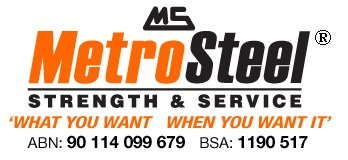 Let’s face it metal is everywhere. That’s probably because when you think about it, there’s really is nothing like it that matches its strength, durability and above all flexibility. It’s used in so many components from the chairs that we sit on, to the laptop that I’m writing this post on. Yet every single piece of metal, whether it’s used in construction, or in appliances, electronics or decorative pieces, has to go through a three-stage fabrication process. Let’s take a closer look at what this entails.
Let’s face it metal is everywhere. That’s probably because when you think about it, there’s really is nothing like it that matches its strength, durability and above all flexibility. It’s used in so many components from the chairs that we sit on, to the laptop that I’m writing this post on. Yet every single piece of metal, whether it’s used in construction, or in appliances, electronics or decorative pieces, has to go through a three-stage fabrication process. Let’s take a closer look at what this entails.
The cutting process
When the raw material is made (whether it be aluminium, stainless steel, or copper) it’s pressed into sheets or rods of various sizes, which then need to be cut to exacting lengths. Once the lengths are correct, they can then be moulded together to form the final piece. Cutting the metal to the client’s exacting standards is vital to any successful project so accuracy is absolutely key. Because of this there are a variety of ways to cut sheet metal, some of them, not what you might think!
- Shearing – Using a cutting machine
- Electrical Discharge Machining (EDM) – Where an electrical spark is used from a charged electrode to melt the metal at a certain given point
- Abrasive cutting – Using a combination of saws of grinders.
- Water jet cutting – Utilising intensely high pressure, concentrated jets of water ranging from 20,000 -60,000 psi.
- Laser cutting
The Forming Process
Once the metal has been successfully cut it’s time to form the metal into the required shape. Years ago this was all done by hand and could be back-breaking work , but in the 21st century some of the labour-intensive elements have been replaced by computerised robots. However for bespoke pieces some of the bending and forming is still manipulated by hand and this is why fabrication is still a highly skilled job. Rolling is generally used to shape flat sheets of metal and utilises roll stands whereas tools and dies are used to stamp specific designs into the metal. If any holes are needed in the metal then this is carried out with a giant and powerful hole punch and finally, latches and handles can be attached to other components using the welding process.
The finishing process
Once the metal been cut and formed into something that resembles the object, it needs to be finished off and this includes eliminating any rough spots using an abrasive. In addition it’s at this stage where it can be treated for UV, rust and water resistance should the customer want it.
So there you have it, the 3 processes of metal fabrication explained! The next time you pick up a fork or spoon, sit on a metal chair or open your laptop, spare a thought for all the intensive processes that it’s had home page – sildenafildosage to go through to get to the stage it is now. Understanding what you know now, it’s probable that you’ll never look a piece of metal in the same way again.
If you’ve got a bespoke or a bulk metal project coming up and have tight deadlines to hit then why not save yourself the stress and aggravation and call in the professionals at Metro Steel. Located in Deception Bay we fully understand that time costs money and as such, we offer all our clients a fast turnaround on a wide variety of stock or processed-to-order steel products. All of this is backed up with a fully reliable and highly professional service. So go on…. contact us on (07) 3204 1000 and see just what we can do for you.
 Talk to an Expert (07) 3204 1000
Talk to an Expert (07) 3204 1000 Working Hours - Mon – Fri 7:00 AM – 4:00 PM
Working Hours - Mon – Fri 7:00 AM – 4:00 PM